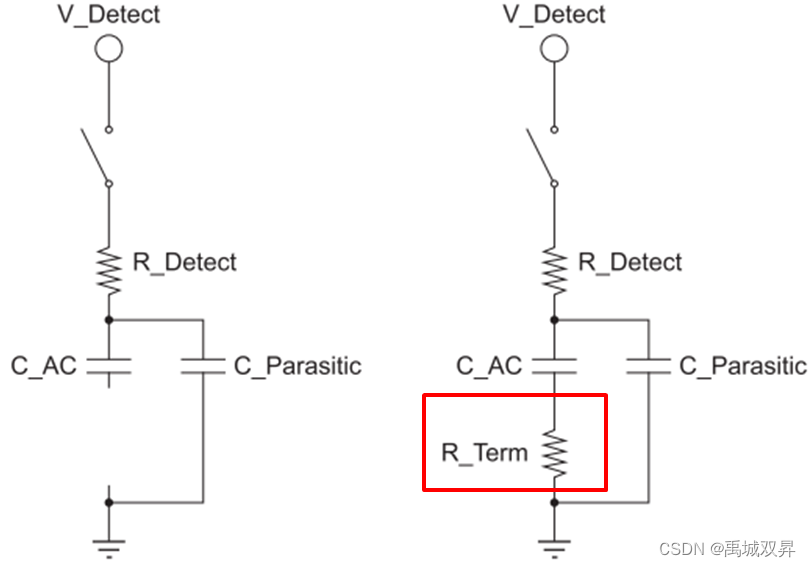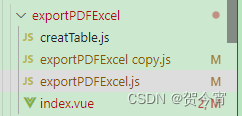文章目录
- Java进阶【十三期】:
- 异常处理
- 一、异常基本介绍
- 二、编译异常和运行异常
- 三、总结
- 异常的作用
- 异常的处理方式
- 一、JVM默认的处理方式
- 二、自己处理异常
- 自己 处理的问题
- 三、总结
- Throwable 成员方法
- 抛出异常
- 总结
- 异常练习
- 自定义异常
- File
- File 三个 构造方法
- File 常见方法
- 一、File - 判断获取方法
- 代码演示
- 二、File - 创建和删除方法
- 代码示例
- 三、File - 获取并遍历
- File - 综合练习
- 练习一、
- 练习二、
- 练习三、
- 练习四、
- 练习五、
- 练习六、
Java进阶【十三期】:
异常处理

一、异常基本介绍
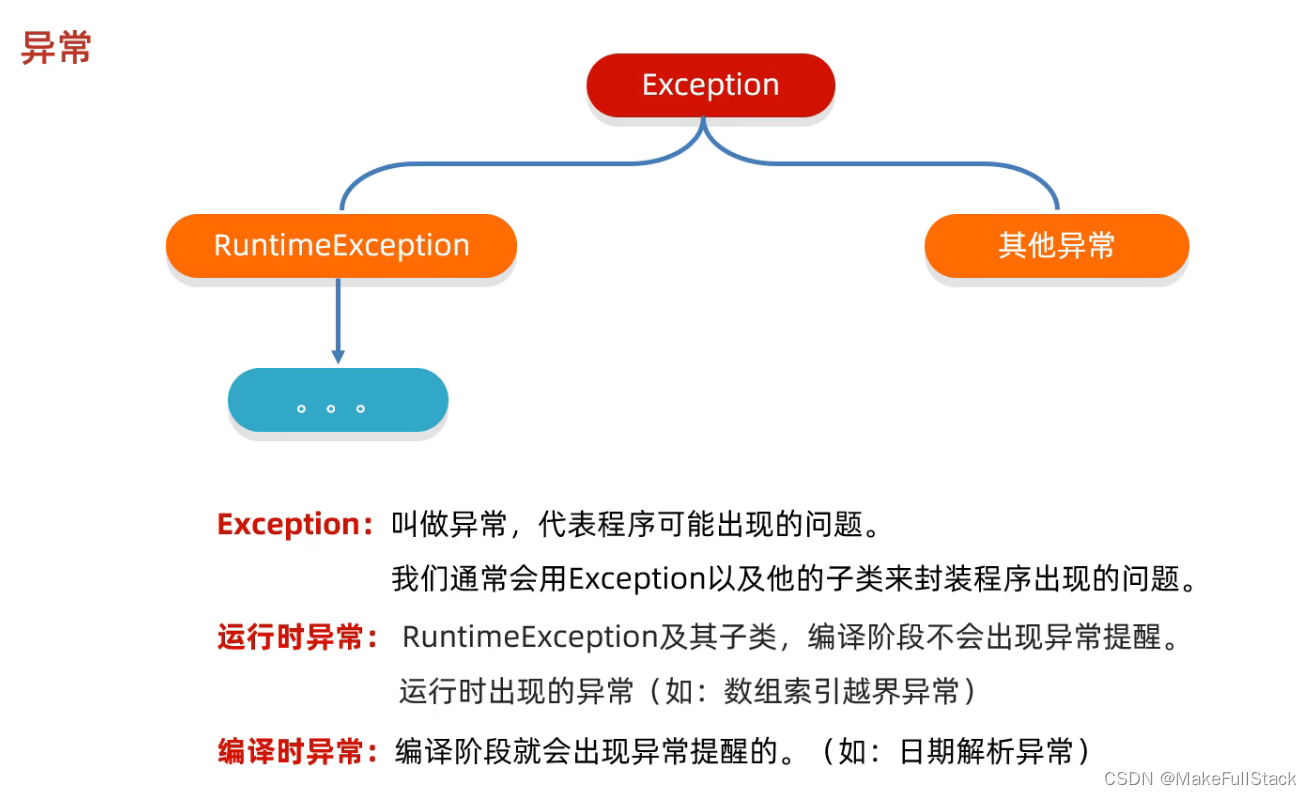
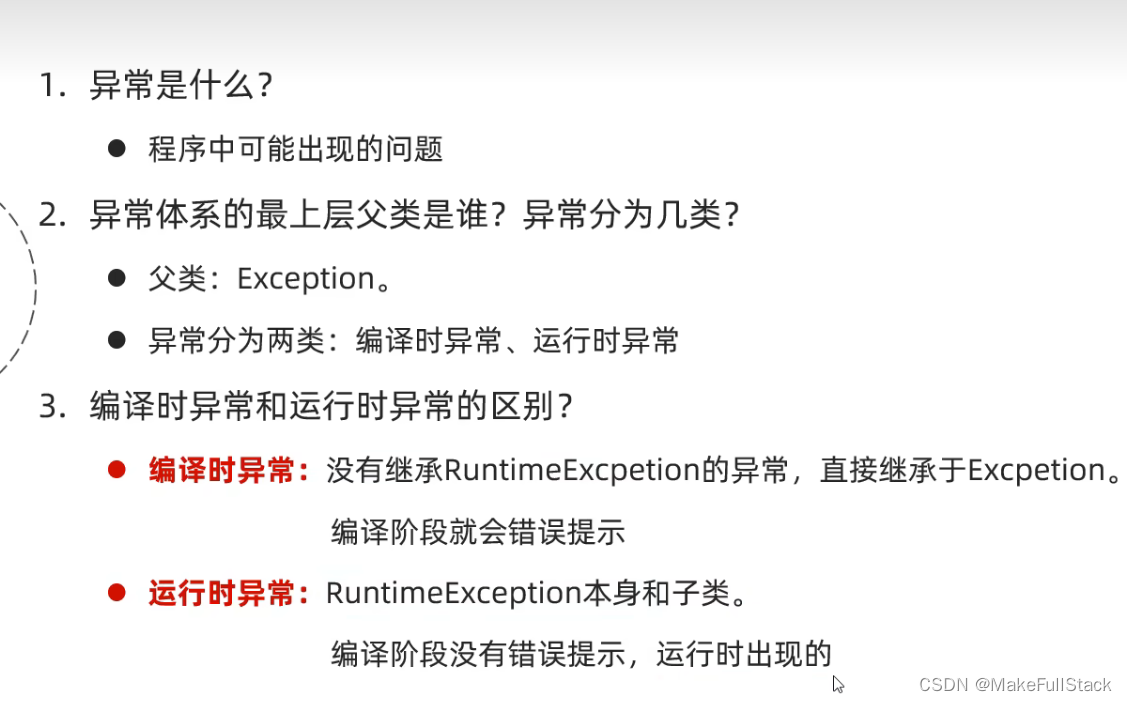
二、编译异常和运行异常
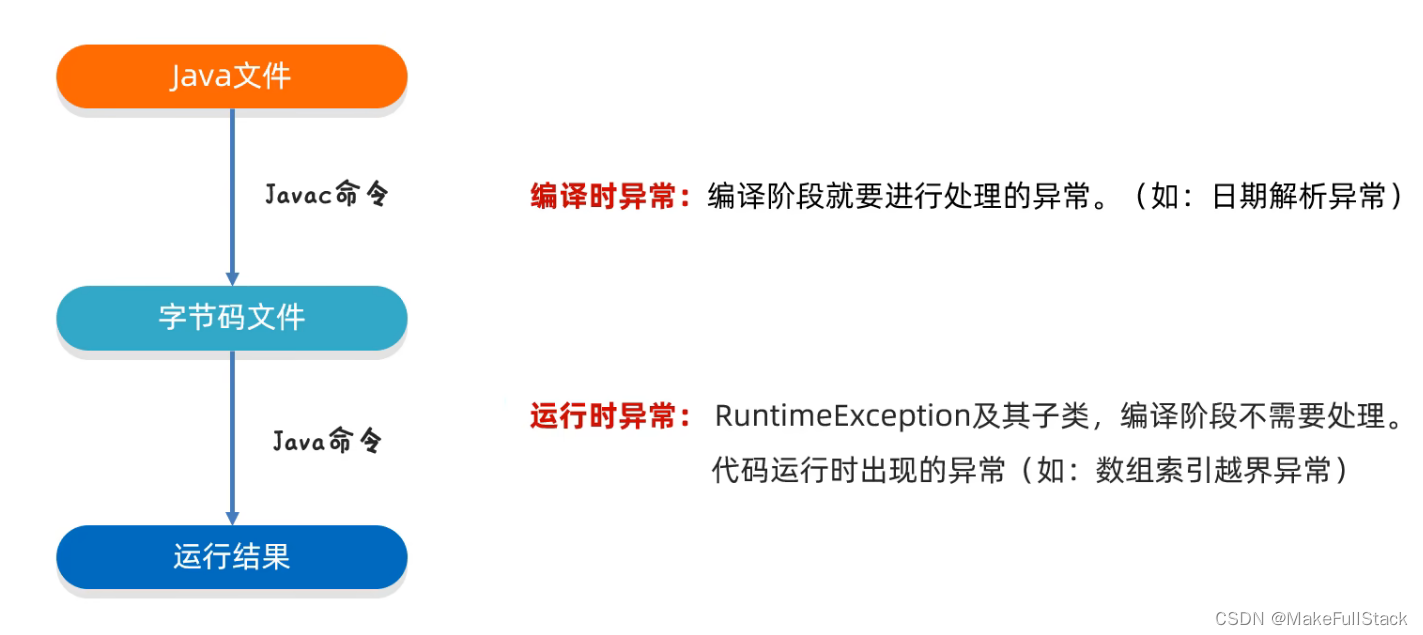
##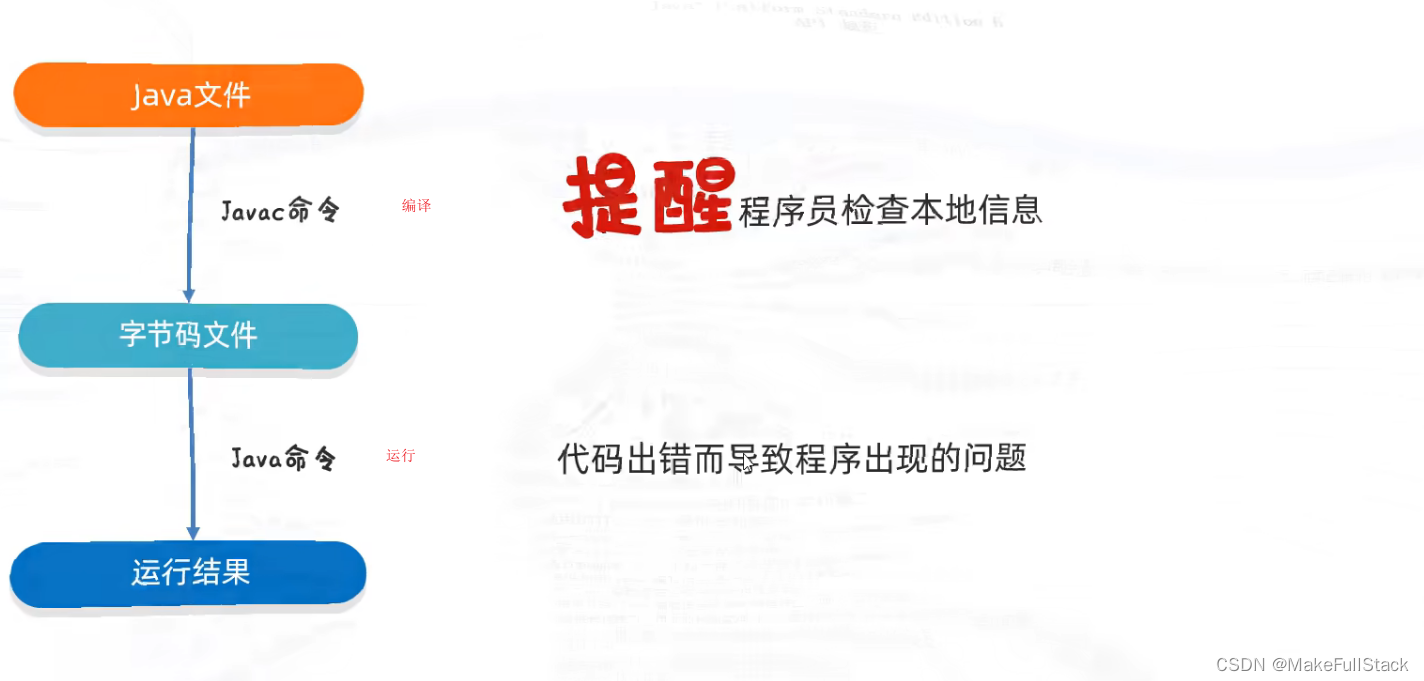
三、总结

异常的作用
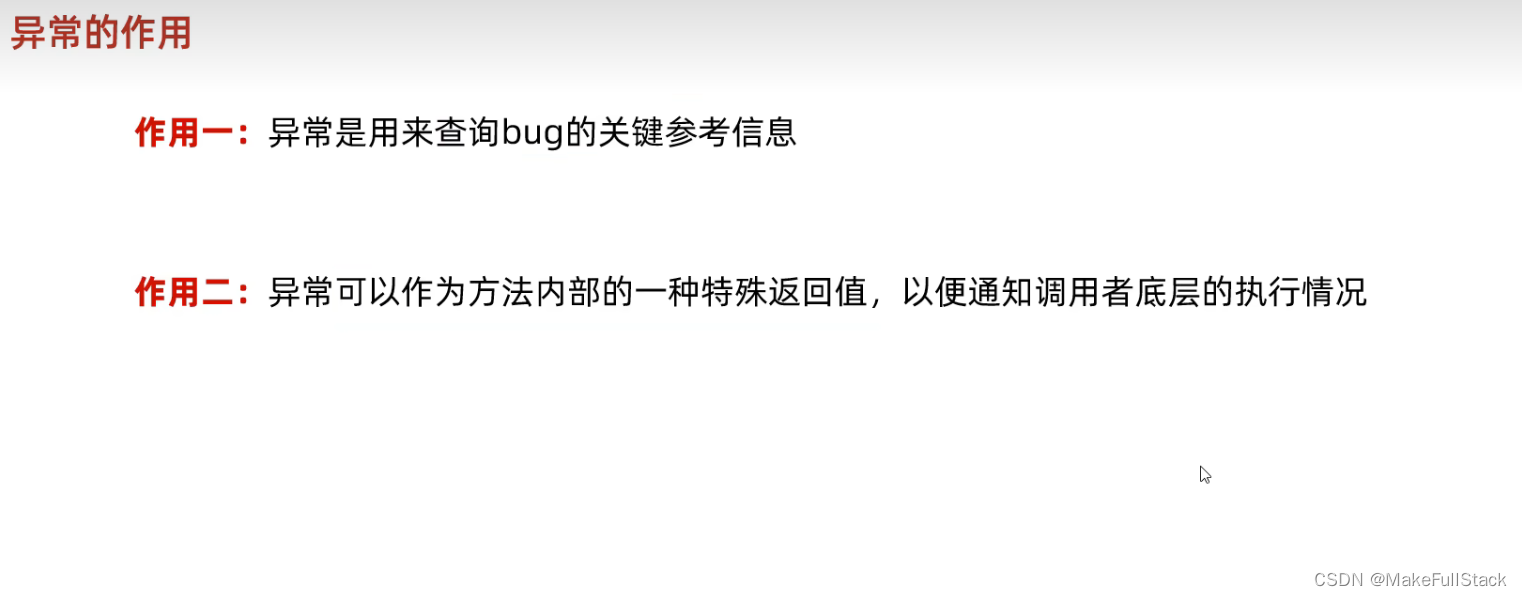
异常的处理方式

一、JVM默认的处理方式
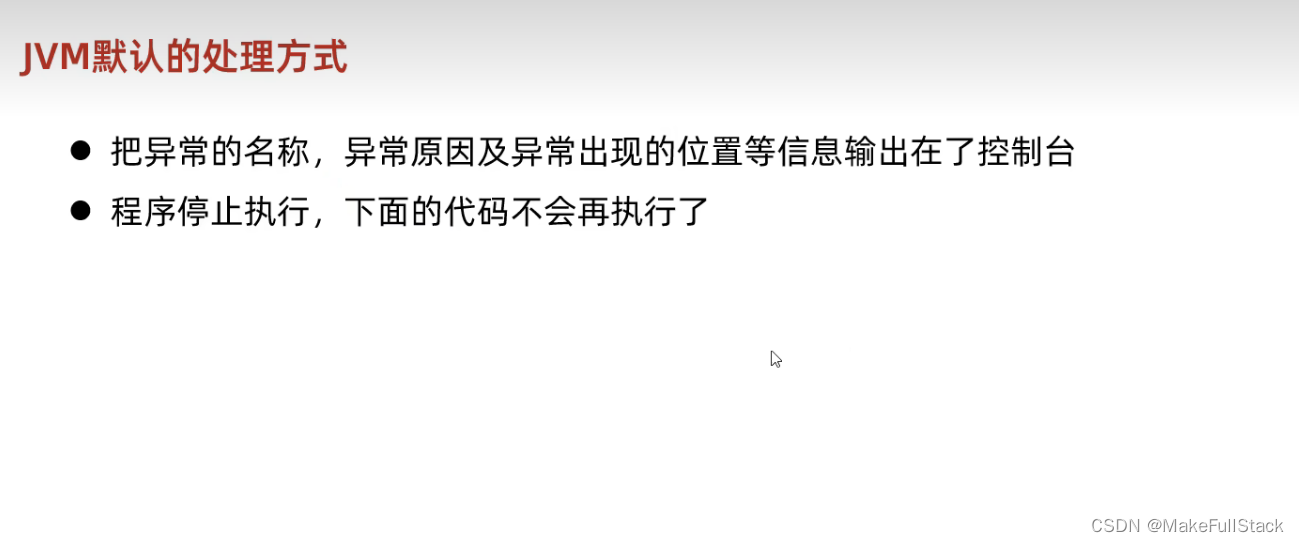
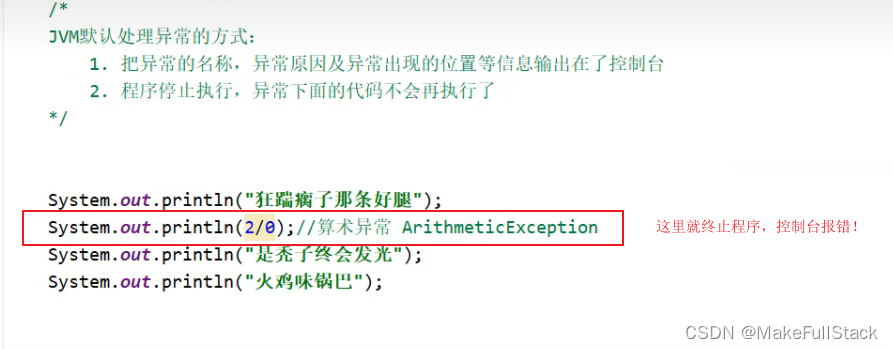
二、自己处理异常


自己 处理的问题

一问答案:
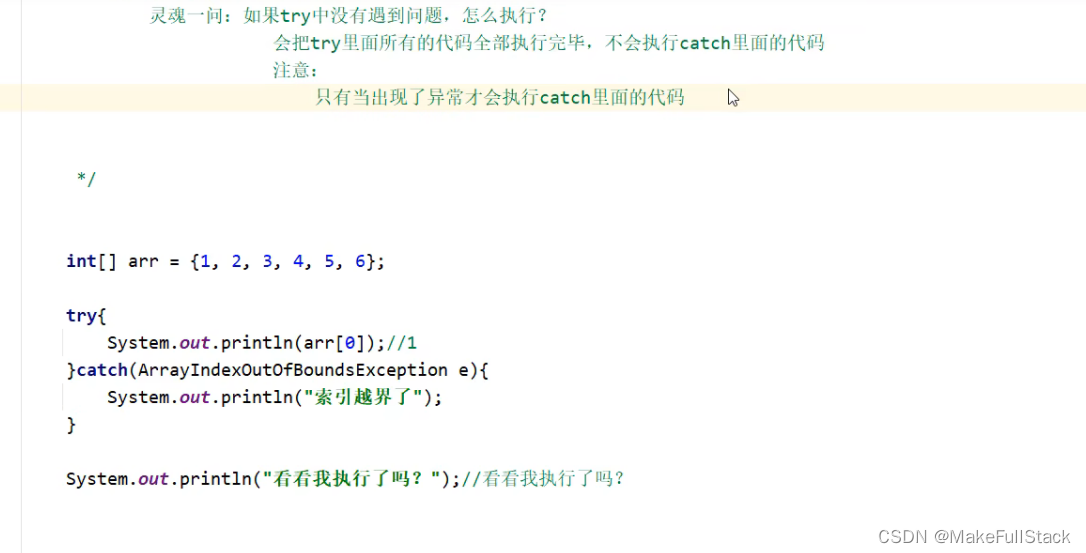
二问答案:
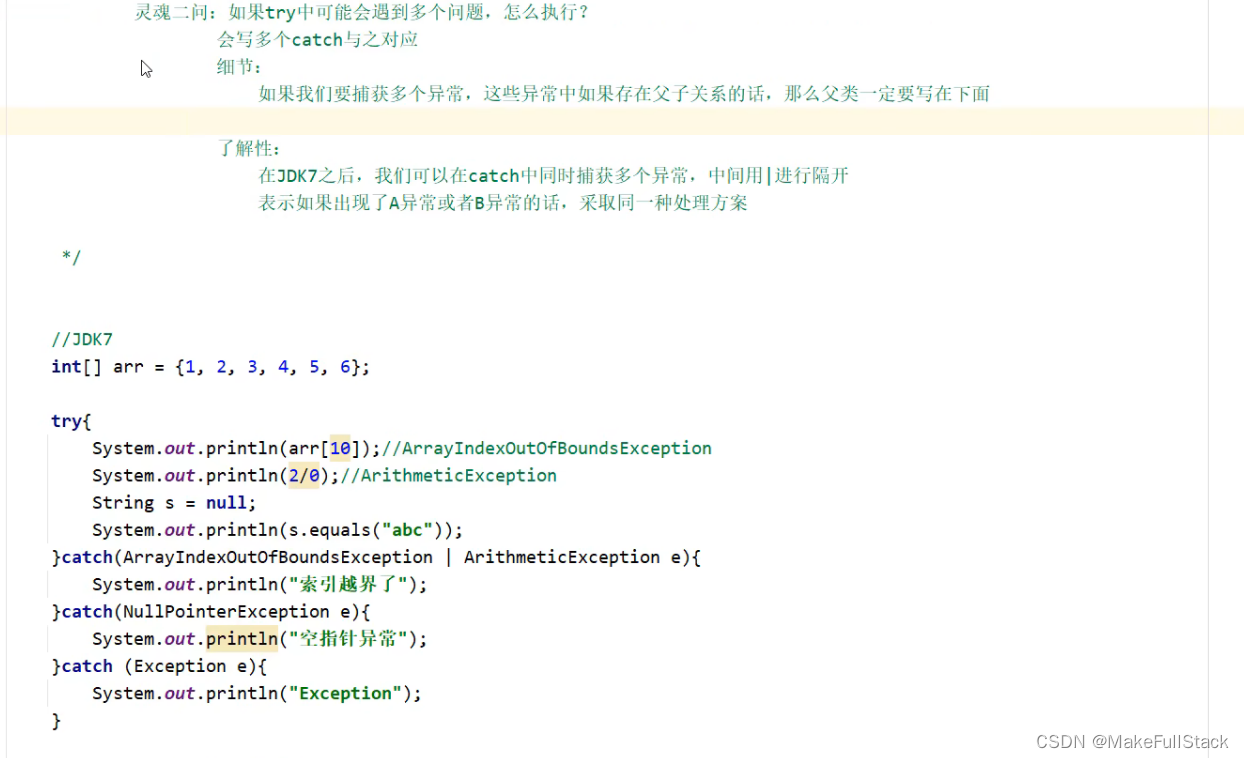
三问答案:
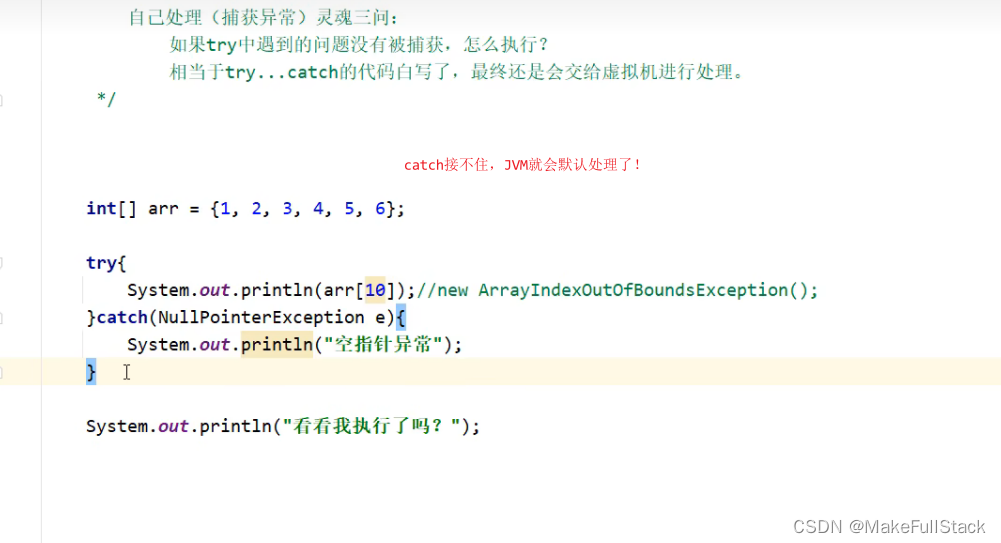
四问答案:
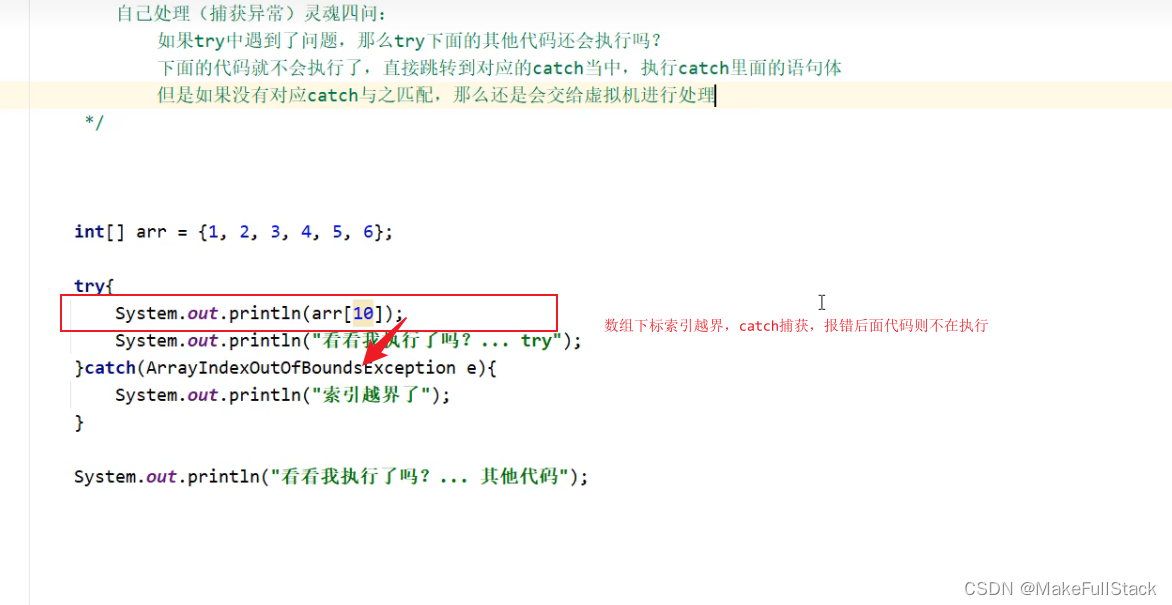
三、总结

Throwable 成员方法
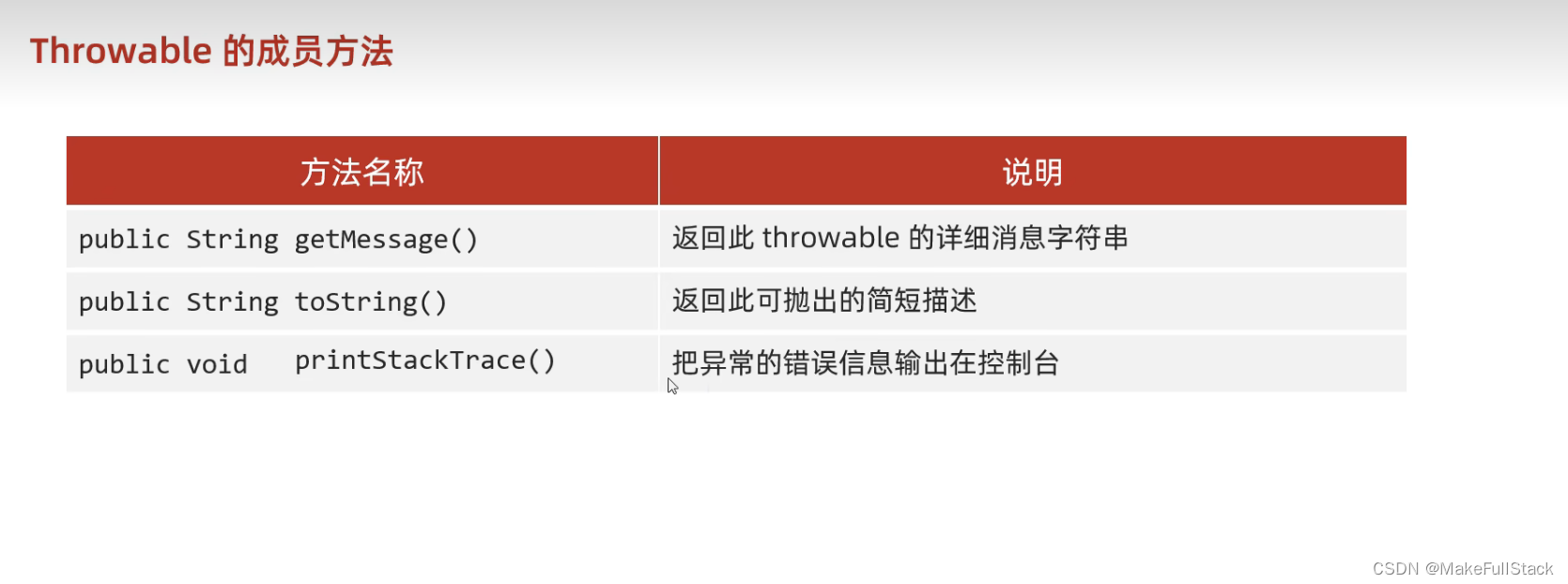
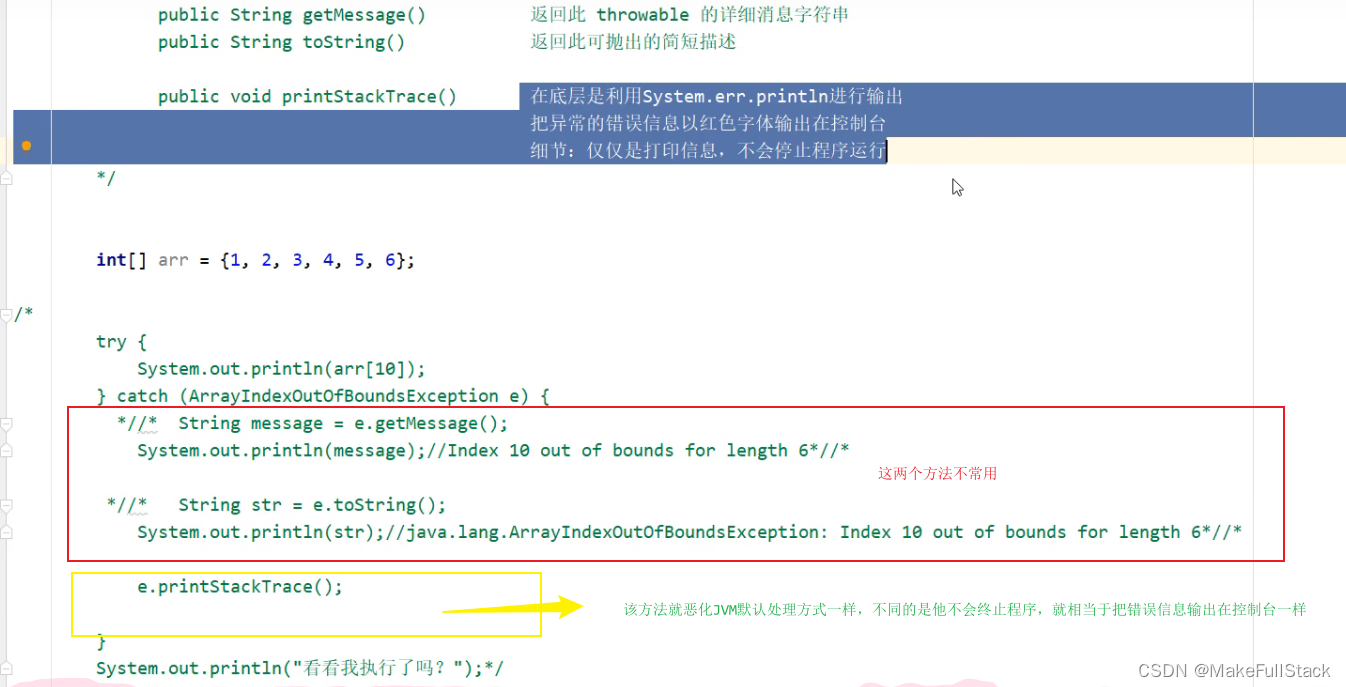
抛出异常
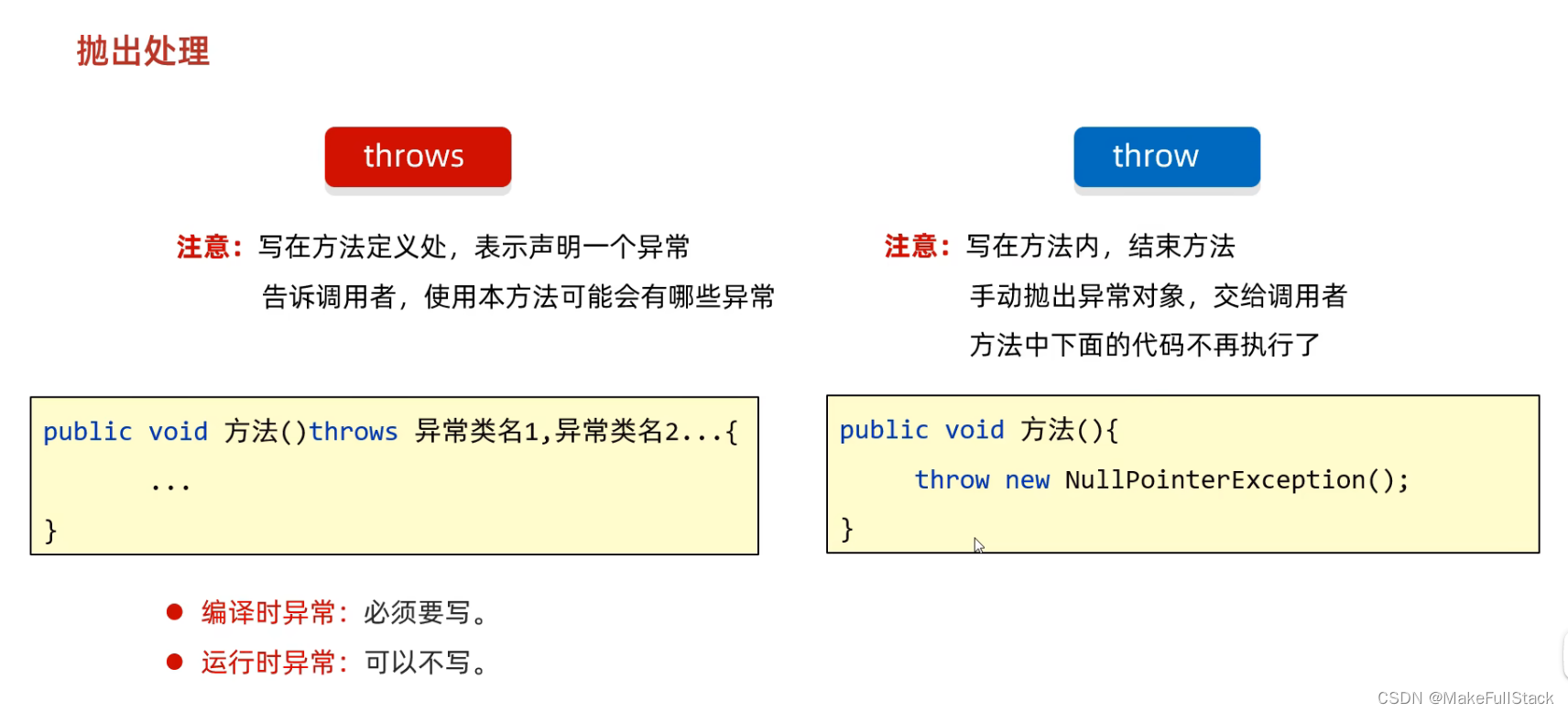
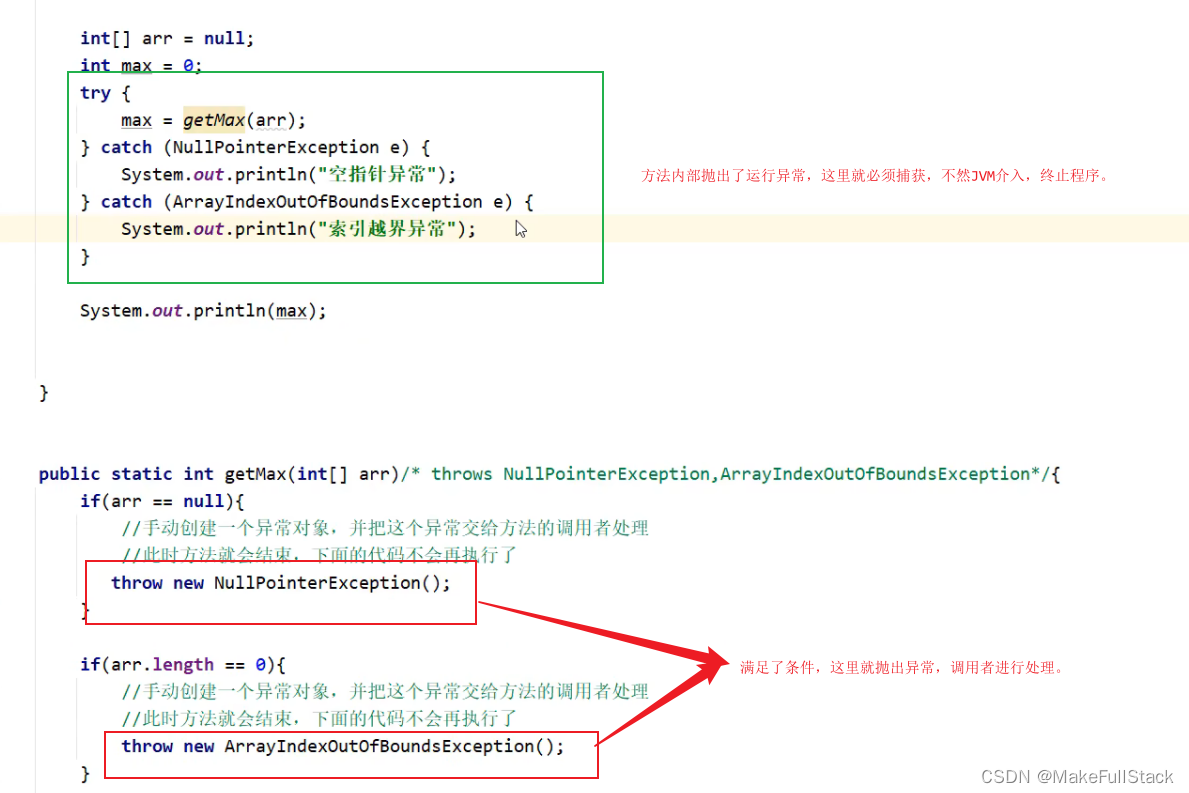
总结

异常练习

Girlfriend类
package com.exception;
public class Girlfriend {
private String name;
private int age;
public Girlfriend() {
}
public Girlfriend(String name, int age) {
this.name = name;
this.age = age;
}
/**
* 获取
* @return name
*/
public String getName() {
return name;
}
/**
* 设置
* @param name
*/
public void setName(String name) throws RuntimeException{
int len = name.length();
if (len < 3 || len > 10) {
throw new RuntimeException();
} else {
this.name = name;
}
}
/**
* 获取
* @return age
*/
public int getAge() {
return age;
}
/**
* 设置
* @param age
*/
public void setAge(int age) {
if (age < 18 || age > 40) {
throw new RuntimeException();
} else {
this.age = age;
}
}
public String toString() {
return "Girlfriend{name = " + name + ", age = " + age + "}";
}
}
测试类
package com.exception;
import java.util.Scanner;
public class ExceptionTest {
public static void main(String[] MakeFullStack) {
Girlfriend girlfriend = new Girlfriend();
Scanner sc = new Scanner(System.in);
while (true) {
try {
System.out.println("请输入女朋友的姓名:");
String girlName = sc.nextLine();
girlfriend.setName(girlName);
System.out.println("请输入女朋友年龄:");
String string = sc.nextLine();
int girlAge = Integer.parseInt(string);
girlfriend.setAge(girlAge);
break;
} catch (NumberFormatException e) {
System.out.println("年龄格式有误!");
} catch (RuntimeException e) {
System.out.println("姓名或者年龄不符合规范!");
}
}
System.out.println(girlfriend);
}
}
自定义异常

- 首先我们创建连个自定义异常类,一个是处理名字错误的,一个是处理年龄错误的。
NameFormatException 姓名处理鳄类
package com.exception;
public class NameFormatException extends RuntimeException {
private String message;
public NameFormatException() {
}
public NameFormatException(String message) {
// 将用户抛出异常传入的错误信息提交给父类
super(message);
this.message = message;
}
public String toString() {
return "NameFormatException:" + this.message;
}
}
AgeOutOfBoundsException 年龄处理类
package com.exception;
public class AgeOutOfBoundsException extends RuntimeException {
private String message;
public AgeOutOfBoundsException() {
}
public AgeOutOfBoundsException(String message) {
// 将用户抛出异常传入的错误信息提交给父类
super(message);
this.message = message;
}
public String toString() {
return "AgeOutOfBoundsException:" + message;
}
}
然后我们的女朋友类中,处理的时候,抛出我们自定义异常处理类即可。
package com.exception;
public class Girlfriend {
private String name;
private int age;
public Girlfriend() {
}
public Girlfriend(String name, int age) {
this.name = name;
this.age = age;
}
/**
* 获取
* @return name
*/
public String getName() {
return name;
}
/**
* 设置
* @param name
*/
public void setName(String name) throws RuntimeException{
int len = name.length();
if (len < 3 || len > 10) {
throw new NameFormatException(len + "格式输入有误");
} else {
this.name = name;
}
}
/**
* 获取
* @return age
*/
public int getAge() {
return age;
}
/**
* 设置
* @param age
*/
public void setAge(int age) {
if (age < 18 || age > 40) {
throw new AgeOutOfBoundsException(age + "年龄超出范围!");
} else {
this.age = age;
}
}
public String toString() {
return "Girlfriend{name = " + name + ", age = " + age + "}";
}
}
最后,我们的测试类中,捕获异常的时候,同样使用我们的自定义异常处理类
package com.exception;
import java.util.Scanner;
public class ExceptionTest {
public static void main(String[] MakeFullStack) {
Girlfriend girlfriend = new Girlfriend();
Scanner sc = new Scanner(System.in);
while (true) {
try {
System.out.println("请输入女朋友的姓名:");
String girlName = sc.nextLine();
girlfriend.setName(girlName);
System.out.println("请输入女朋友年龄:");
String string = sc.nextLine();
int girlAge = Integer.parseInt(string);
girlfriend.setAge(girlAge);
break;
} catch (NumberFormatException e) {
System.out.println("年龄格式有误!");
} catch (NameFormatException e) {
// 输出自定义异常捕获到的错误信息
e.printStackTrace();
} catch (AgeOutOfBoundsException e) {
// 输出自定义异常捕获到的错误信息
e.printStackTrace();
}
}
System.out.println(girlfriend);
}
}
File
文件的路径
File 三个 构造方法
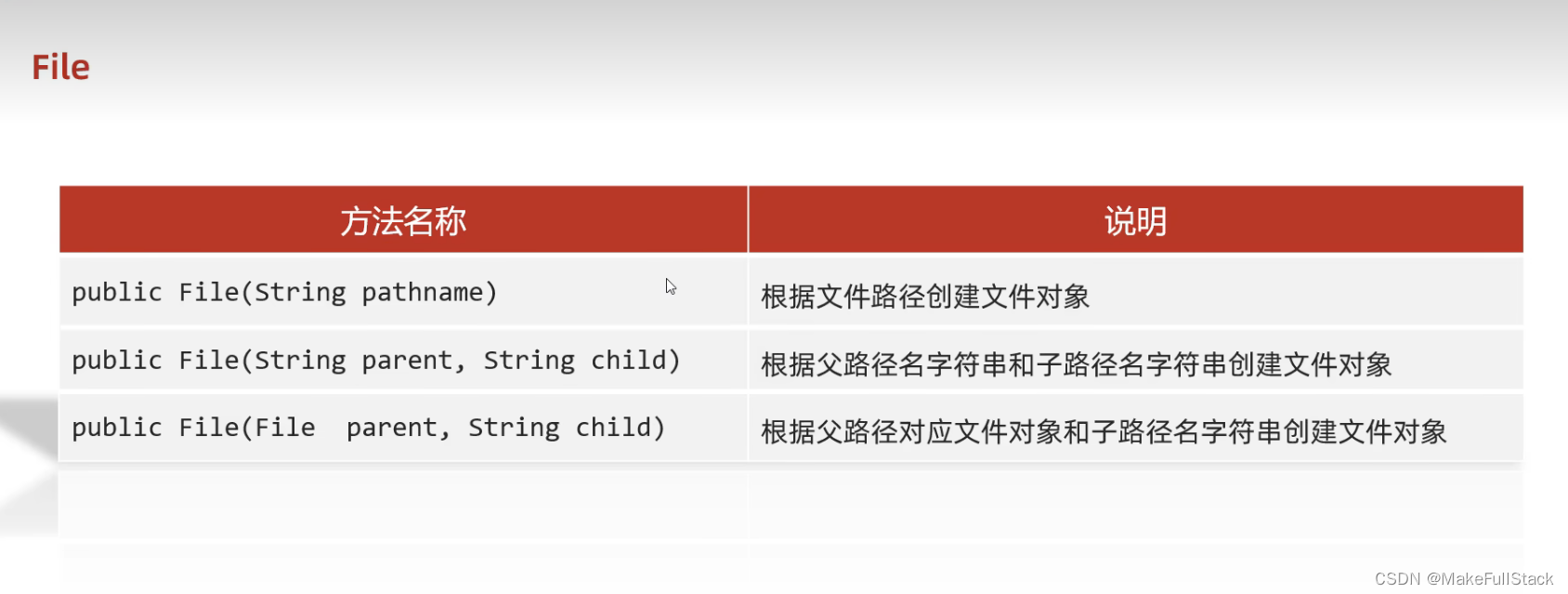
代码示例:
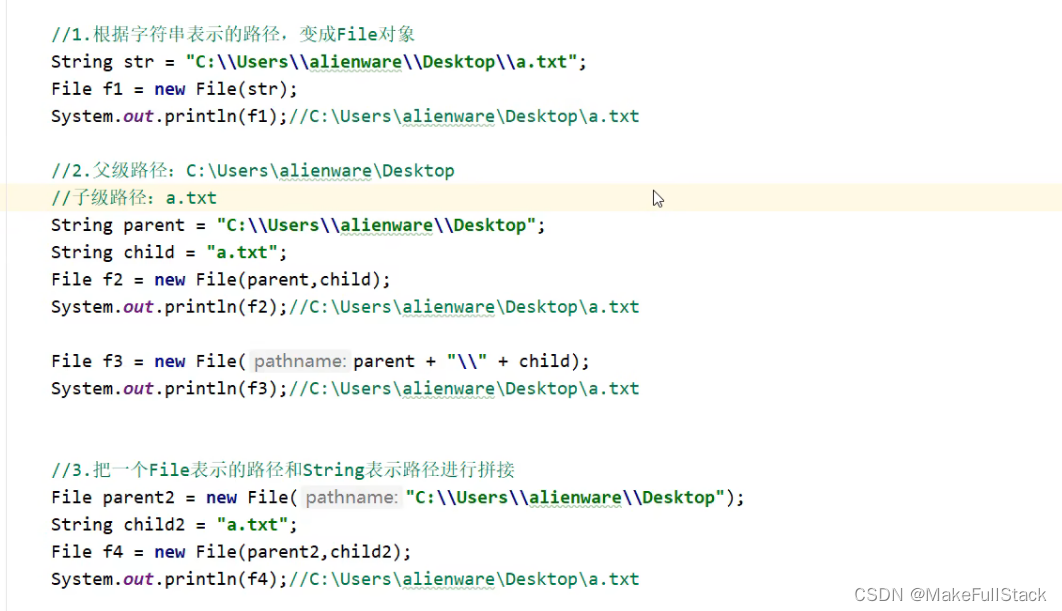
小结
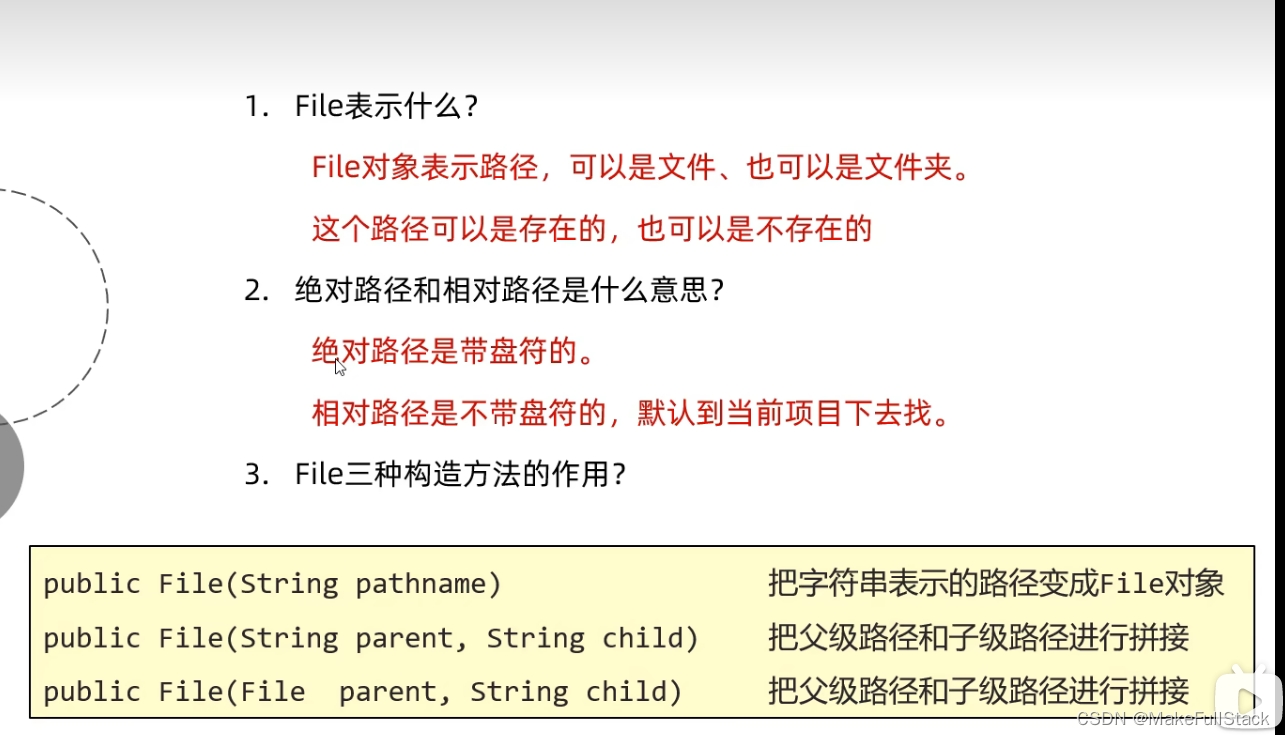
File 常见方法
一、File - 判断获取方法
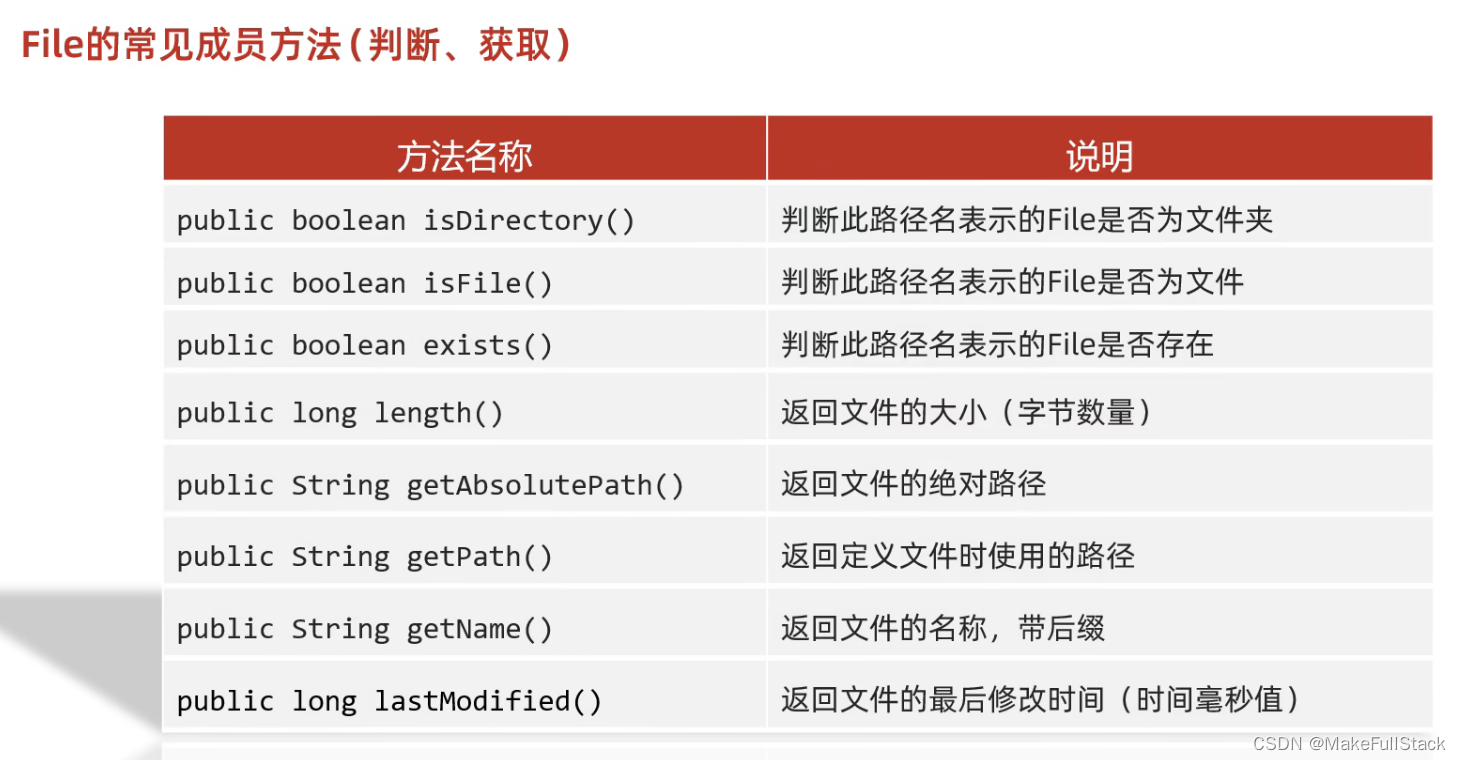
代码演示
package com.file;
import java.io.File;
public class FileDemo1 {
public static void main(String [] MakeFullStack) {
/**
* File的常见成员方法(判断、获取)
*/
// 1. isDirectory() 判断 该路径 File 是否为文件夹
File f11 = new File("E:\\MakeFullStack.txt");
boolean f11Director = f11.isDirectory();
System.out.println(f11Director); // false
File f12 = new File("E:\\MakeItPossible");
boolean f12Directory = f12.isDirectory();
System.out.println(f12Directory); // true
System.out.println("=====================分界线=====================");
// 2. isFile() 判断该路径 File 是否为文件
File f21 = new File("E:\\MakeFullStack.txt");
boolean f21File = f21.isFile();
System.out.println(f21File); // true
File f22 = new File("E:\\MakeItPossible");
boolean f22File = f22.isFile();
System.out.println(f22File); // false
System.out.println("=====================分界线=====================");
// 3. exists () 判断该 路径 File 是否存在
File f31 = new File("E:\\MakeFullStack.txt");
boolean f31Exists = f31.exists();
System.out.println(f31Exists); // true
File f32 = new File("E:\\MakeItPossible");
boolean f32Exists = f32.exists();
System.out.println(f32Exists); // true
System.out.println("=====================分界线=====================");
// 4. length() 返回文件的大小(字节数量)
File f41 = new File("E:\\MakeFullStack.txt");
long f41Length = f41.length();
System.out.println(f41Length); // 13
File f42 = new File("E:\\MakeFullStack");
long f42Length = f42.length();
System.out.println(f42Length); // 0
System.out.println("=====================分界线=====================");
// 5. getAbsolutePath() 返回文件的绝对路径
File f51 = new File("E:\\MakeFullStack.txt");
String f51Path = f51.getAbsolutePath();
System.out.println(f51Path); // E:\MakeFullStack.txt
File f52 = new File("E:\\MakeItPossible");
String f52Path = f52.getAbsolutePath();
System.out.println(f52Path); // E:\MakeItPossible
System.out.println("=====================分界线=====================");
// 6. getPath() 返回文件使用的路径
File f61 = new File("E:\\MakeFullStack.txt");
String f61Path = f61.getPath();
System.out.println(f61Path); // E:\MakeFullStack.txt
File f62 = new File("E:\\MakeItPossible");
String f62Path = f62.getPath();
System.out.println(f62Path); // E:\MakeItPossible
System.out.println("=====================分界线=====================");
// 7. getName() 返回文件的名称,带后缀
File f71 = new File("E:\\MakeFullStack.txt");
String f71Name = f71.getName();
System.out.println(f71Name); // MakeFullStack.txt
File f72 = new File("E:\\MakeItPossible");
String f72Name = f72.getName();
System.out.println(f72Name); // MakeItPossible (这是个文件,没以后后缀)
System.out.println("=====================分界线=====================");
// 8. lastModified() 返回文件最后的修改时间(时间戳毫秒)
File f81 = new File("E:\\MakeFullStack.txt");
long f81LatsTime = f81.lastModified();
System.out.println(f81LatsTime); // 1714669081566
System.out.println("=====================分界线=====================");
}
}
二、File - 创建和删除方法

代码示例
package com.file;
import java.io.File;
import java.io.IOException;
public class FileDemo2 {
public static void main(String[] MakeFullStack) throws IOException {
/**
* File 的常见成员方法(创建、删除)
*/
// 1. createNewFile() 创建一个新的空文件夹
File f1 = new File("E:\\MakeCode.txt");
boolean newFile = f1.createNewFile();
System.out.println(newFile); // true
System.out.println("============================================");
// 2. mkdir() 创建单级文件夹
File f2 = new File("E:\\aaa");
boolean mkdir = f2.mkdir();
System.out.println(mkdir); // true
System.out.println("============================================");
// 3. mkdirs() 创建多级文件夹
File f3 = new File("E:\\BBB\\CCC");
boolean mkdirs = f3.mkdirs();
System.out.println(mkdirs); // true
System.out.println("============================================");
// 4. delete() 删除文件、空文件夹
File f4 = new File("E:\\aaa");
boolean delete = f4.delete();
System.out.println(delete); // true
File f5 = new File("E:\\MakeCode");
boolean delete1 = f5.delete();
System.out.println(delete1); // true
}
}
三、File - 获取并遍历
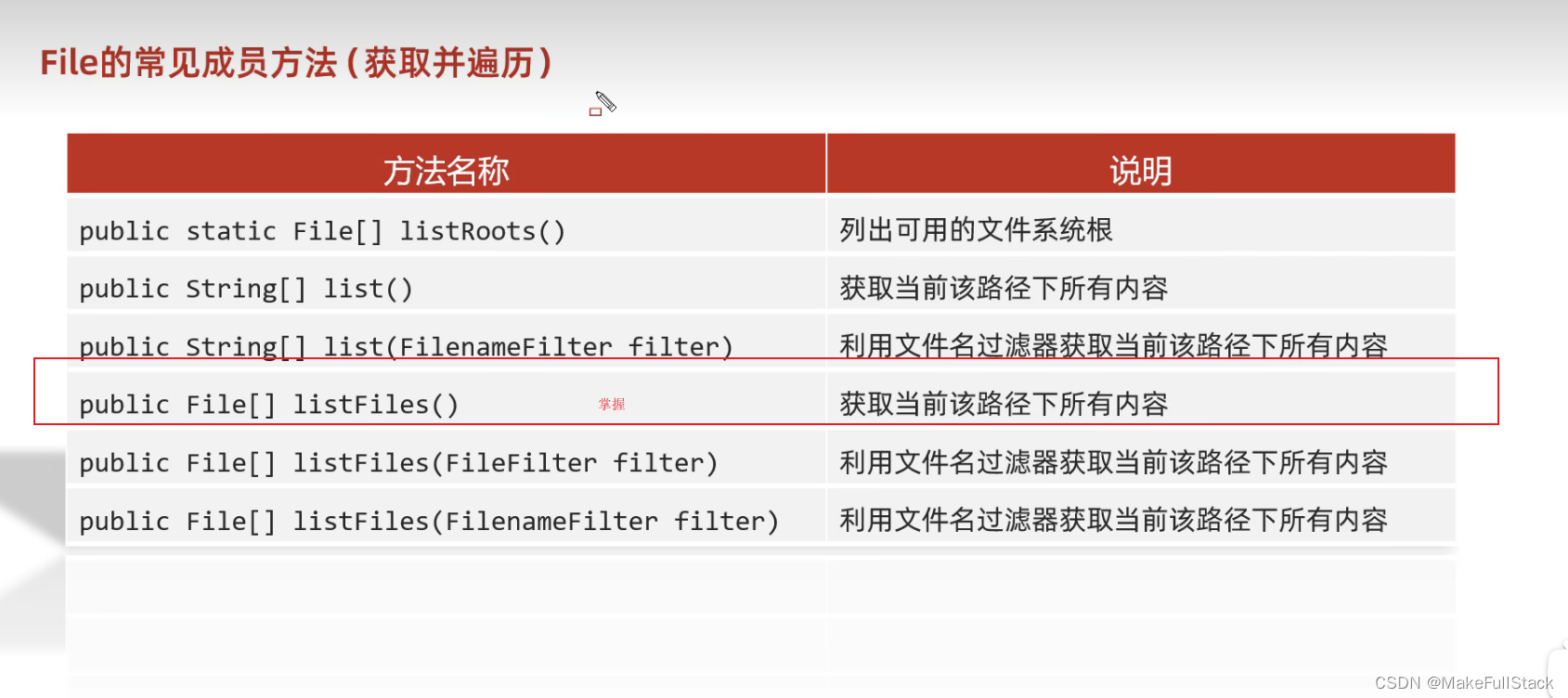

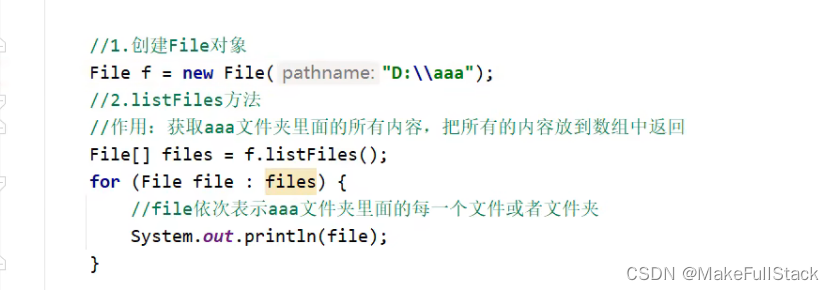
File - 综合练习
练习一、
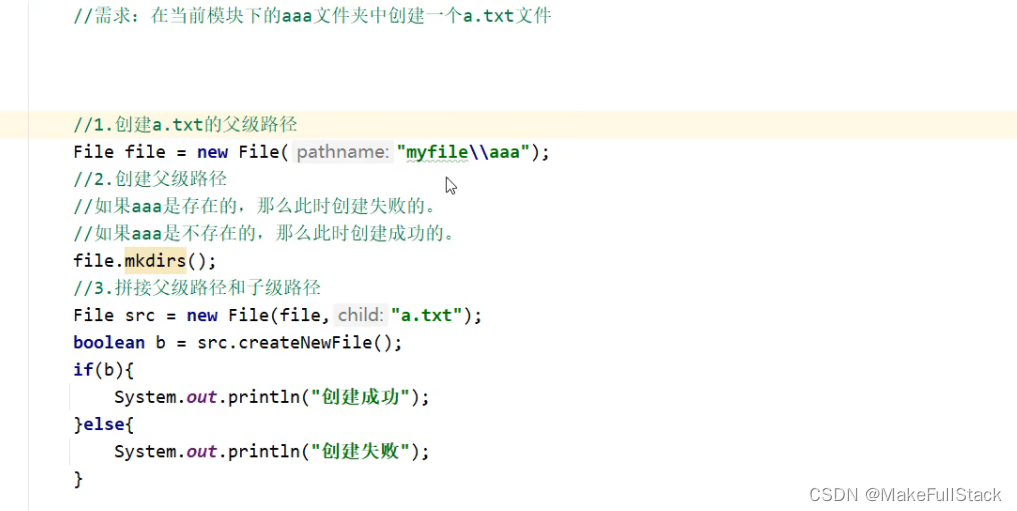
练习二、
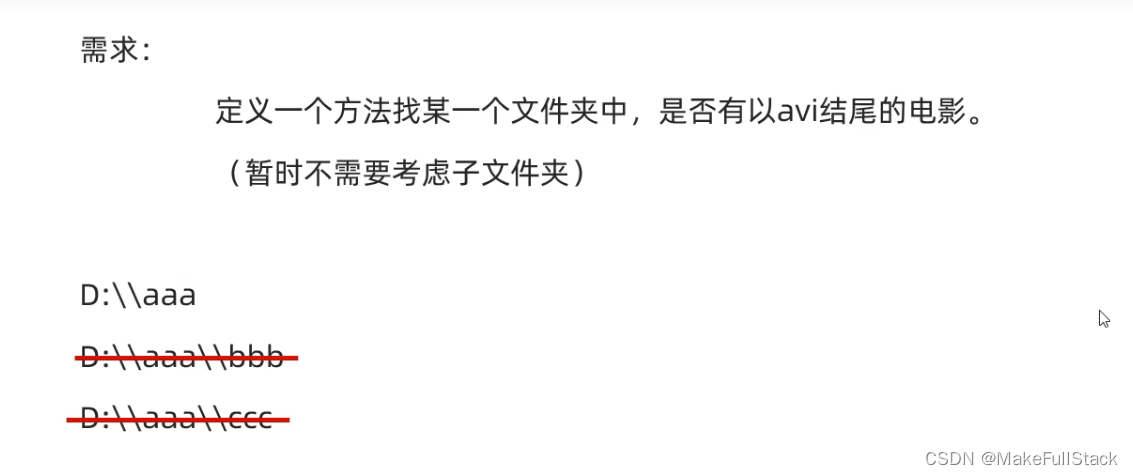
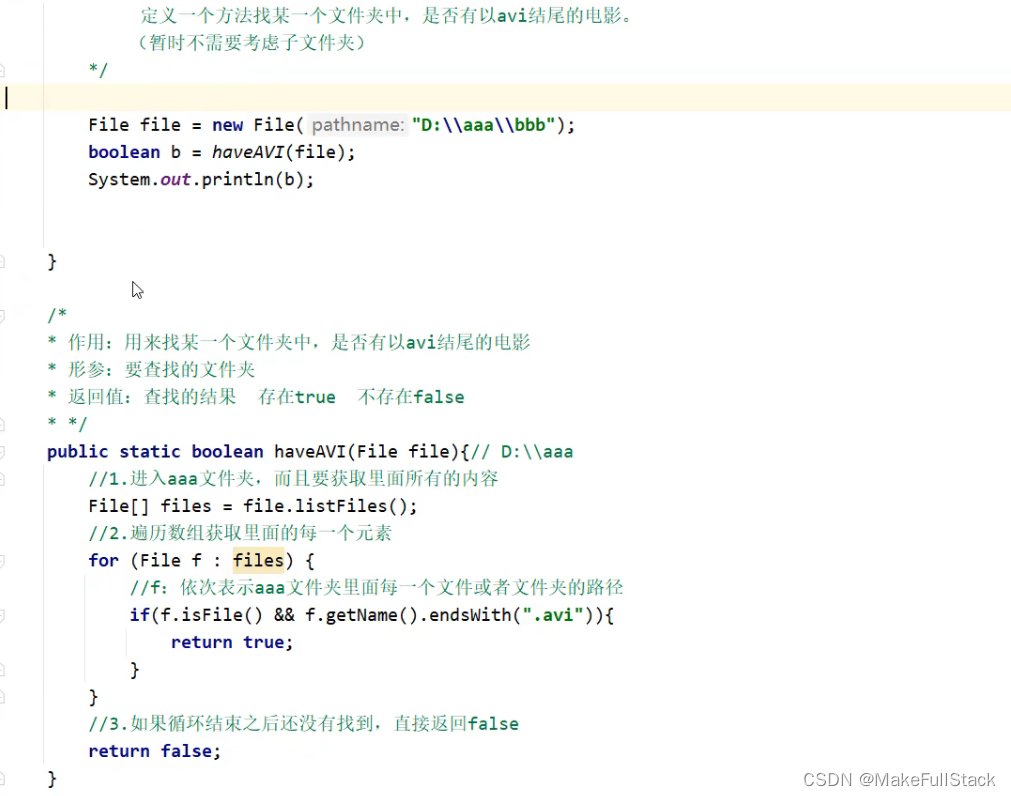
练习三、
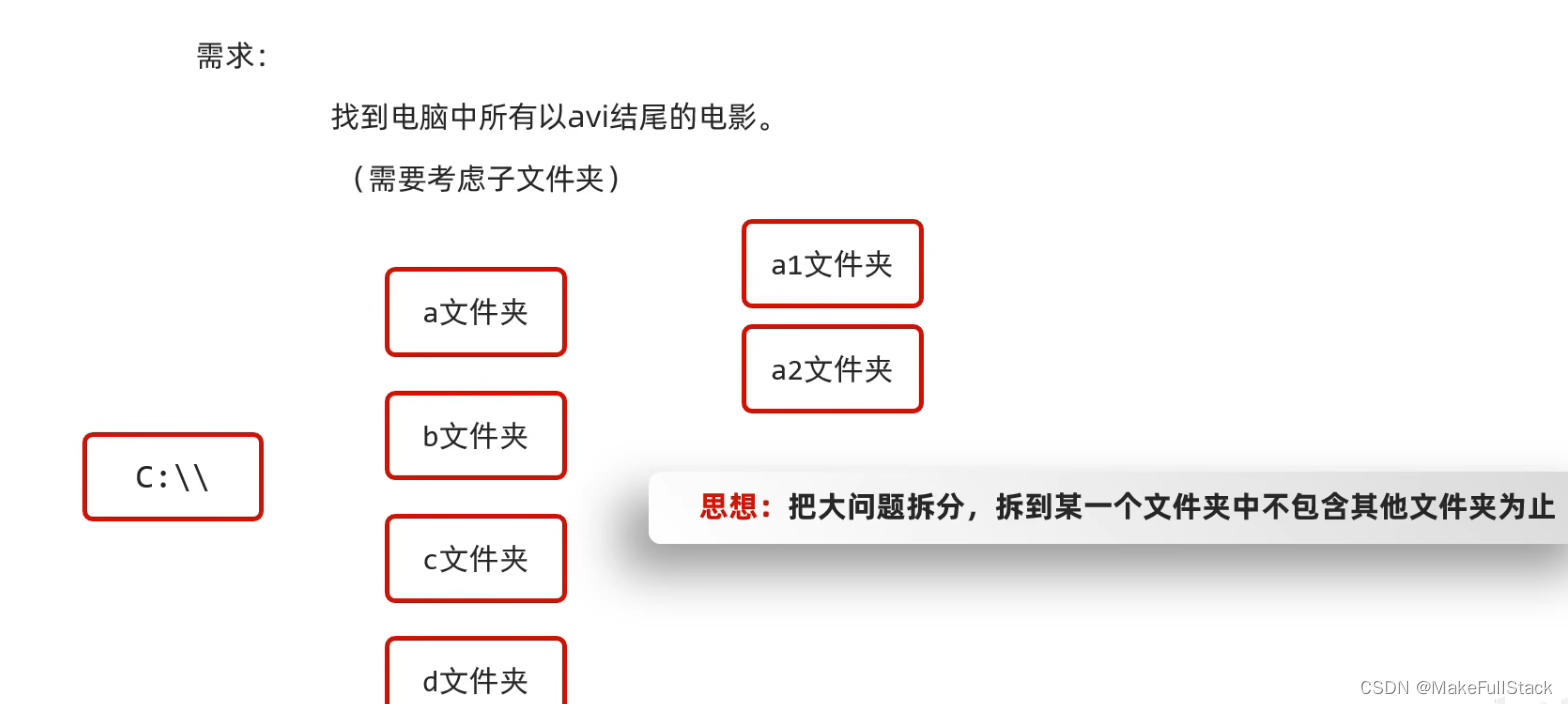
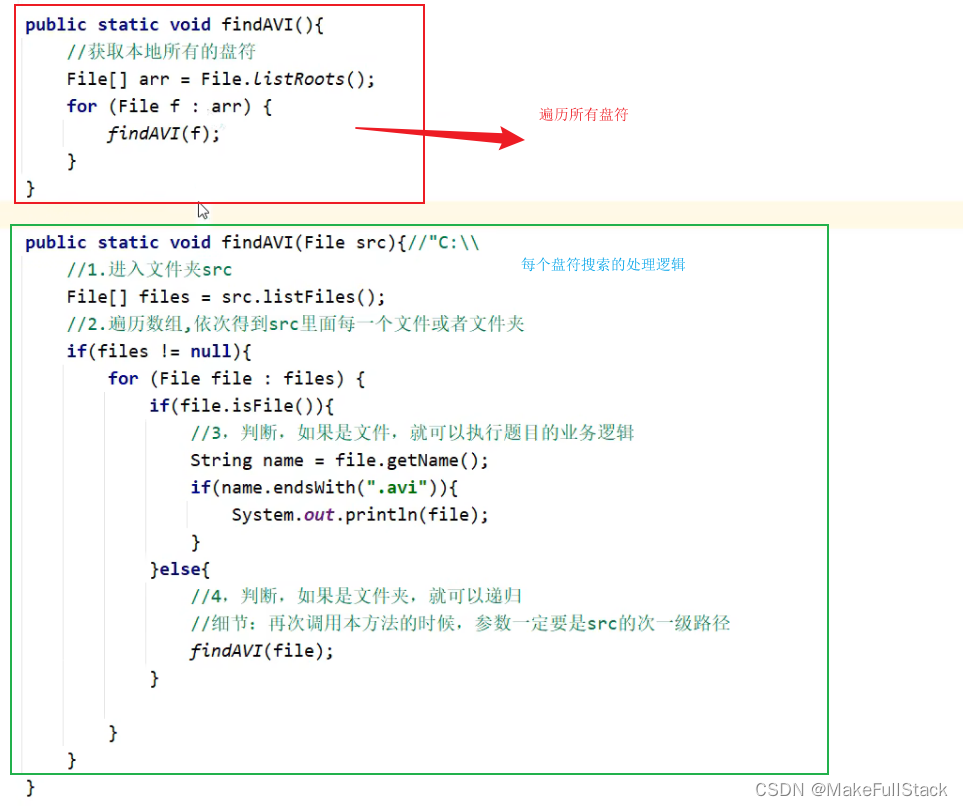
练习四、
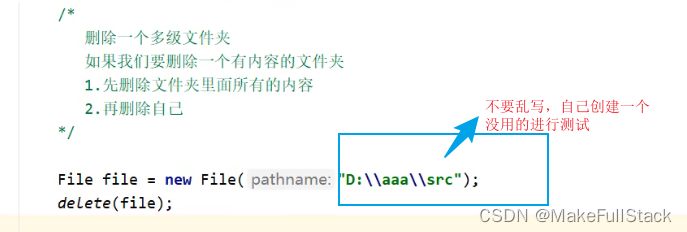

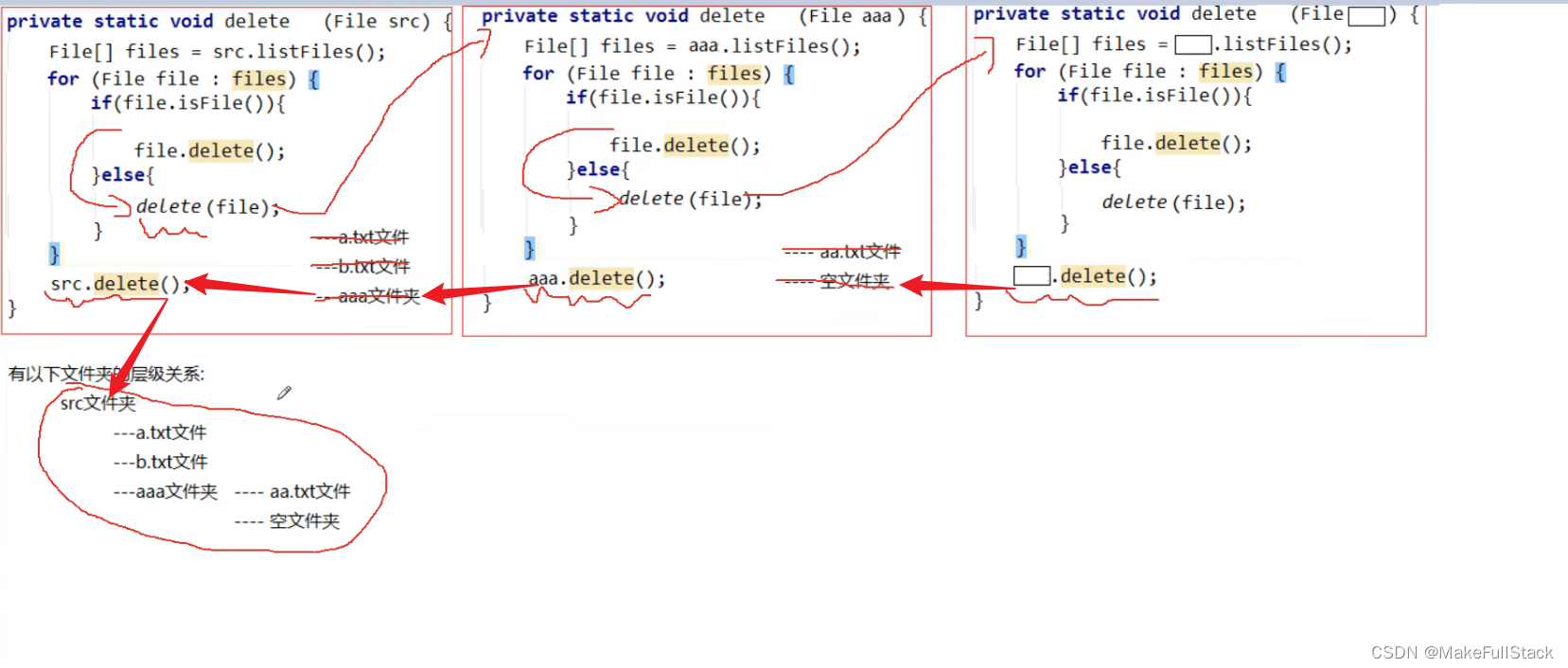
练习五、
- 统计一个文件夹总大小

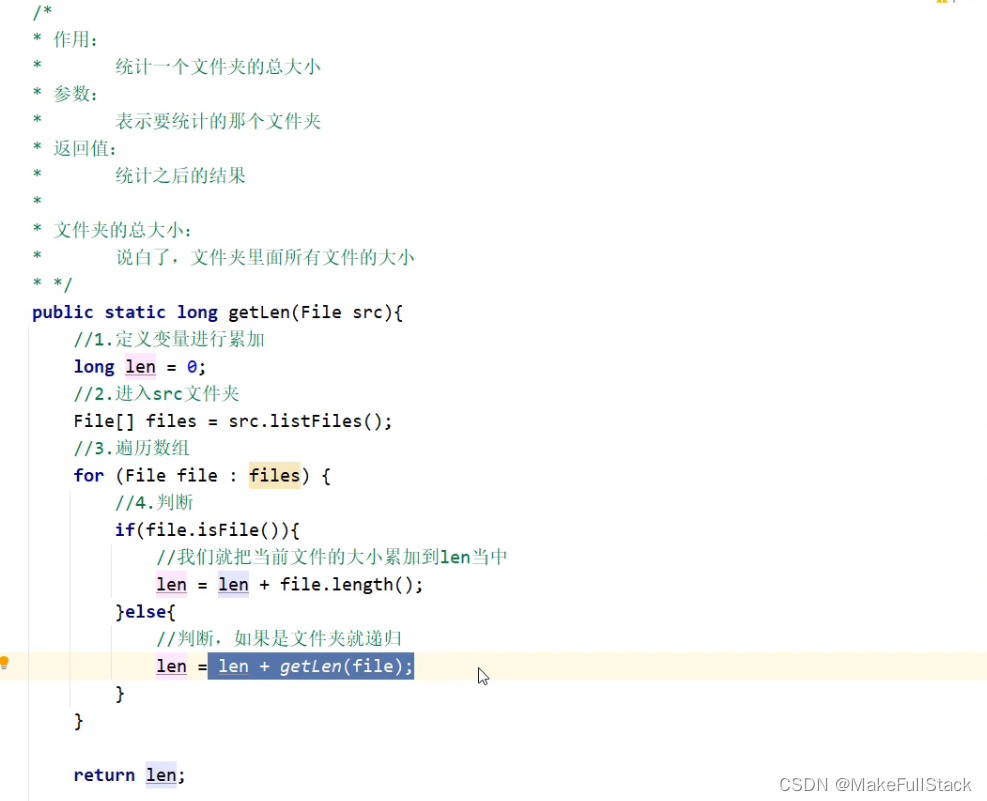
练习六、
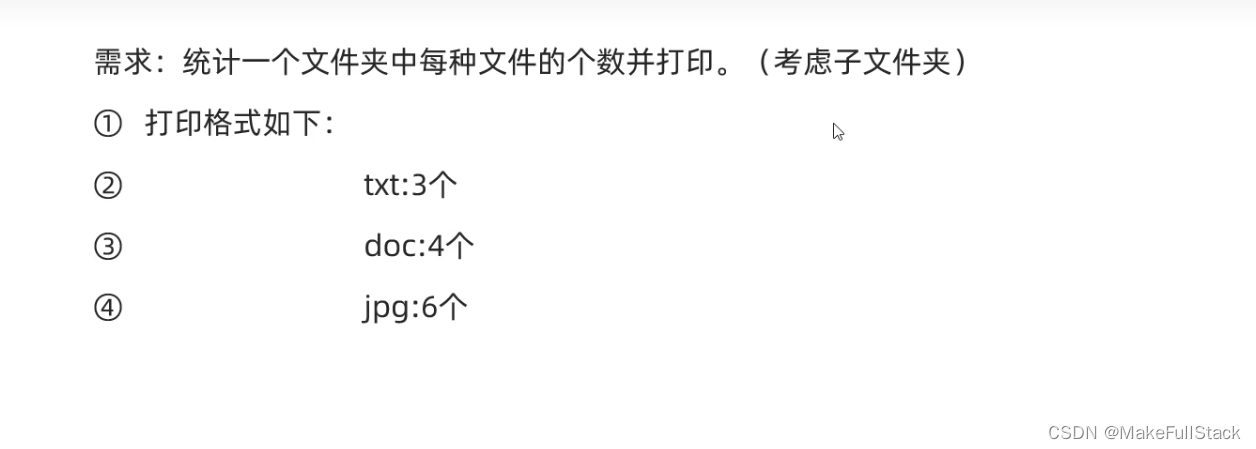

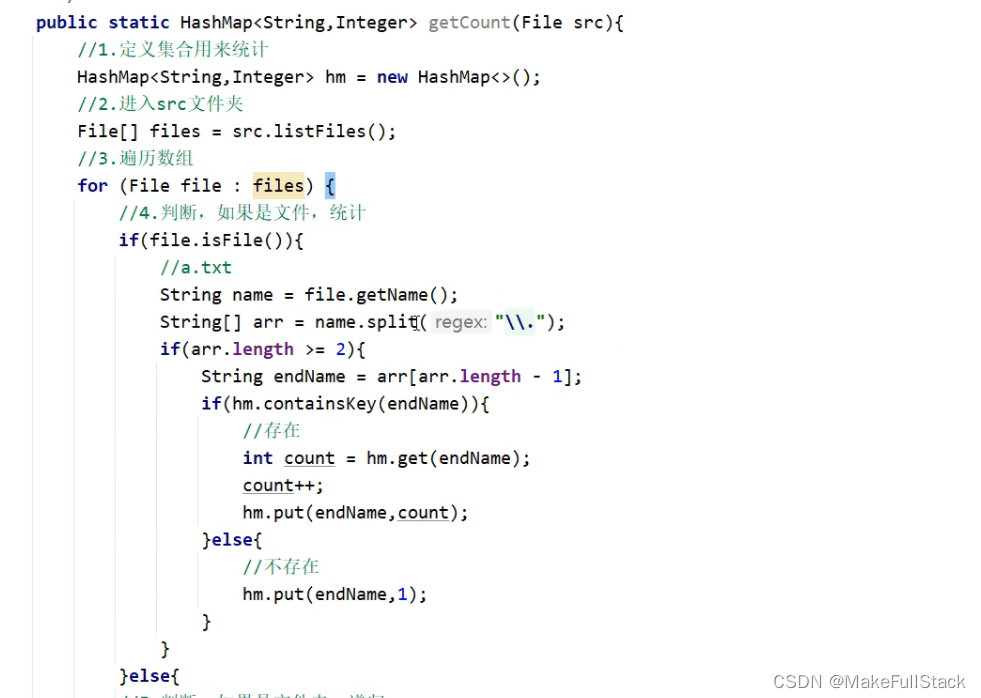
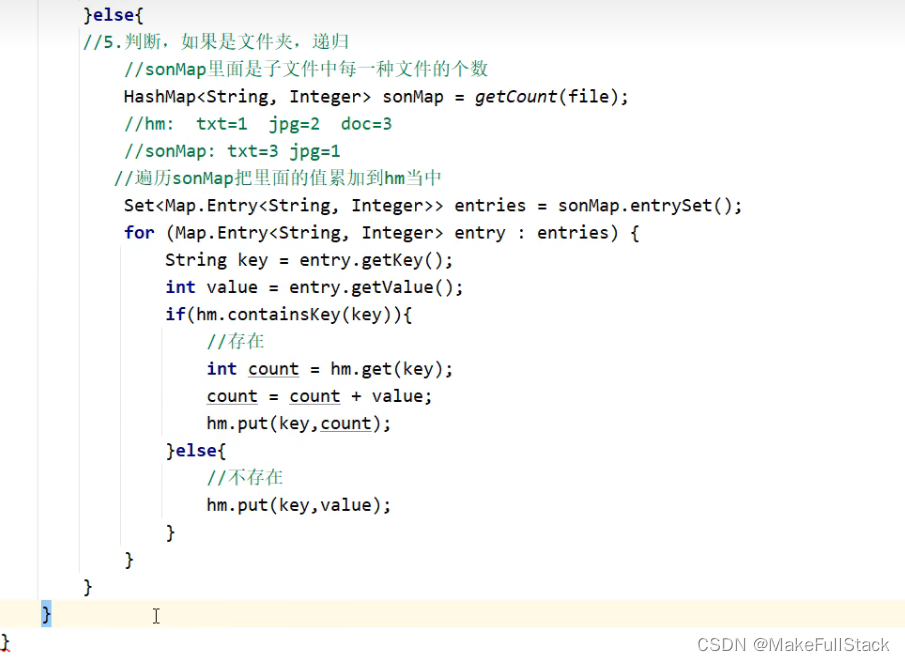


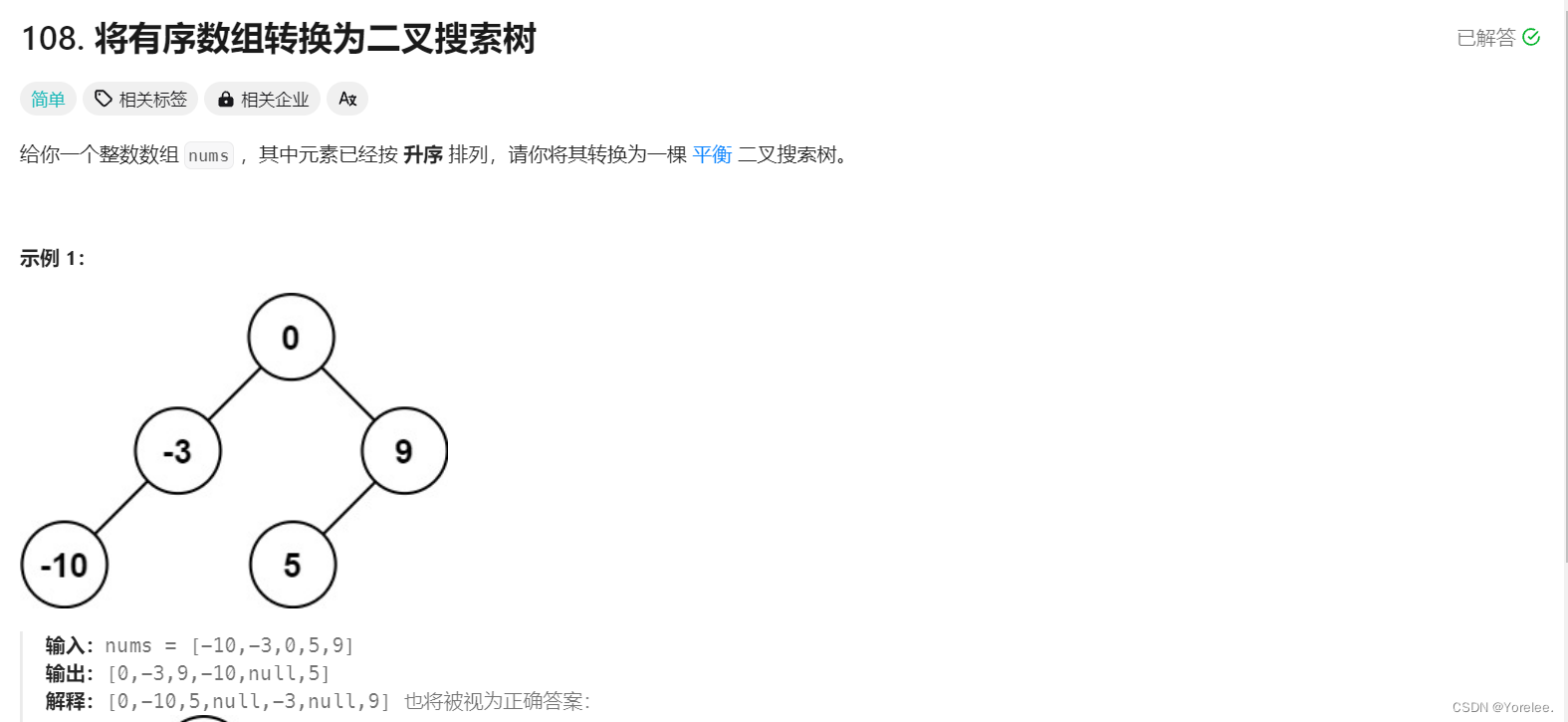



![题目:方格取数[Easy]](https://img-blog.csdnimg.cn/direct/608b05b3f45f4e4bb6aab23207154da3.png)

